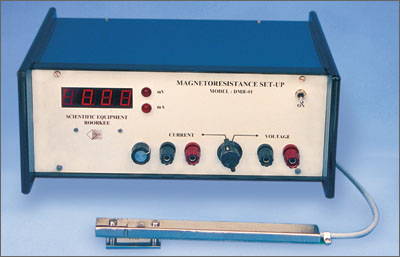Introduction
It is noticed that the resistance of the sample changes when the magnetic field is turned on. The phenomenon, called magnetoresistance, is due to the fact that the drift velocity of all carriers is not same. With the magnetic field on; the Hall voltage V is given as:
V = Eyt = |v x H|
which compensates exactly the Lorentz force for carriers with the average velocity; slower carriers will be over compensated and faster one undercompensated, resulting in trajectories that are not along the applied field. This results in an effective decrease of the mean free path and hence an increase in resistivity.
Here the above referred symbols are defines as: v = drift velocity; E = applied electric field; t = thickness of the crystal; H = Magnetic field
|


